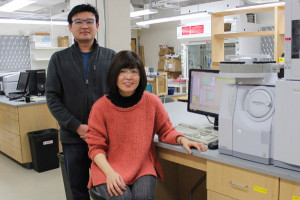While we typically work to preserve the environment, there are some aspects that cause more harm than good. Harmful algal blooms (HABs) are one of these environmentally hazardous parts of nature, severely impacting human health, the ecosystem, and the economy.
While HABs put countless people at risk though polluted drinking water, researchers are now attempting to create some good from this negative. Through heating the algal at a very high temperature in argon gas, HABs can be converted into a material known as hard carbon. Typically made from petroleum, hard carbon also has development potential through biomass. Due to the material’s qualities and capabilities, hard carbons have the potential to be used as high-capacity, low-cost electrodes for sodium-ion batteries.
“Harmful algal blooms, caused by cyanobacteria (or so called ‘blue-green algae’), severely threaten humans, livestock, and wildlife, leading to illness and sometimes even death,” says Da Deng, co-author of the recent study. “The Toledo water crisis in 2014 caused by HABs in Lake Erie is a vivid example of their powerful and destructive impact. The existing technologies to mitigate HABs are considered a ‘passive’ technology and have certain limitations. It would significantly and broadly impact our society and environment if alternative technologies could be developed to convert the HABs into functional high-value products.”



